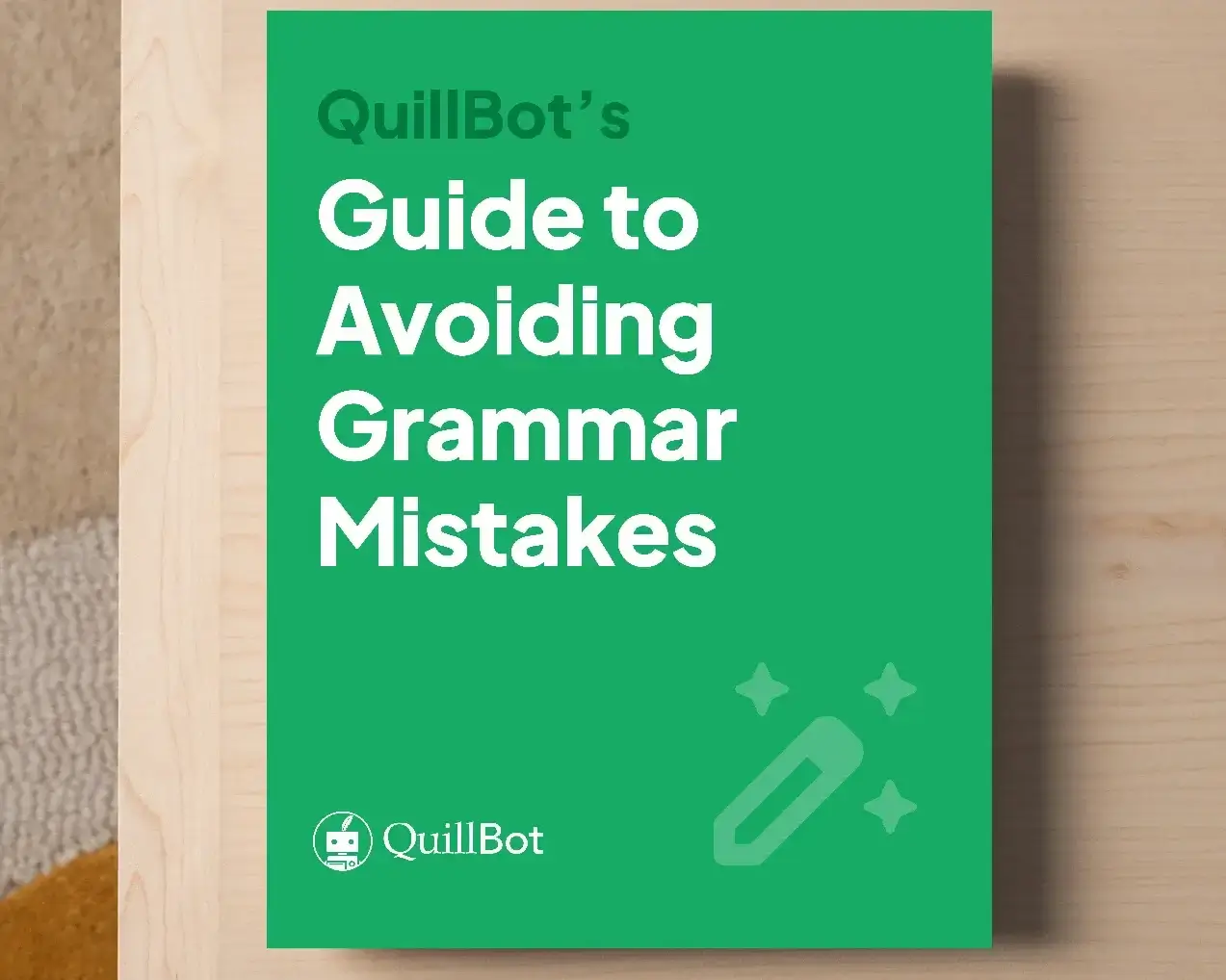What Is Verb Tense? | Definition, Examples & Chart
Verb tense shows whether an action occurs in the past, present, or future. For each of the main verb tenses in English, there are four variations (called grammatical aspects): simple, continuous, perfect, and perfect continuous. The four aspects provide details about an action’s completion and/or duration. English has a total of 12 verb tenses:
- Past tenses: Simple past, past continuous, past perfect, and past perfect continuous
- Present tenses: Simple present, present continuous, present perfect, and present perfect continuous
- Future tenses: Simple future, future continuous, future perfect, and future perfect continuous
Each verb tense has different rules about how to spell the main verb and whether to use helping verbs.
The definitions and examples below show when and how to use the 12 different verb tenses. QuillBot’s free Grammar Checker can also help you conjugate verbs correctly in your writing.
Leah moved from an apartment in the city to a cottage on the river.
Sam has been practicing guitar since this morning.
What is a verb tense?
A verb tense is a verb form that indicates the timeframe of an action or situation. Each verb in English has 12 possible verb forms, which fall into three main verb tenses:
- Past: Happened in the past
- Present: Happening now
- Future: Happening later
Each main verb tense has four variations (aka grammatical aspects) that indicate the action’s completion or duration:
- Simple: Complete or habitual
- Continuous: In progress or ongoing
- Perfect: Completed or started before another point in time
- Perfect continuous: In progress or ongoing up to a certain point in time
For all of the 12 verb tenses, the main verb has a specific suffix or spelling (e.g., “voted” or “chose”). The continuous, perfect, and perfect continuous tenses also include helping verbs (e.g., “will be voting”).
| Past | Present | Future | |
| Simple | Pam worked at the supermarket last weekend. | Pam works at the supermarket every weekend. | Pam will work at the store next weekend. |
| Continuous | Pam was working at the grocery store during the game. | Pam is working at a grocery store while she looks for another job. | Pam will be working at the grocery store for two more weeks. |
| Perfect | Pam had worked as a bus driver before she changed jobs. | As of today, Pam has worked at the supermarket for almost a year. | Pam will have worked 40 hours by Friday. |
| Perfect continuous | Pam had been planning to quit when she got a raise. | Pam has been working at the store since last June. | Pam will have been working for 50 years by the time she retires. |
Past verb tenses
Past verb tenses all show that an action or situation occurred in the past. The four past verb tenses show whether an action was completed in the past, in progress in the past, or related to another past action.
Simple past tense
Use the simple past tense for a single action or situation that already happened. Simple past tense verbs have an “-ed” ending (for regular verbs) or a special spelling (for irregular verbs).
Elliott wrote a science fiction novel last year. [“Wrote” is the simple past tense of “to write.”]
Penny taught Victor and Jas how to read. [“Taught” is the simple past tense for “to teach.”]
Past continuous tense
Use the past continuous tense (aka past progressive) for actions that were ongoing in the past. The past continuous verb form has two parts:
- “Was/were” + the present participle of the main verb, which ends in “-ing”
Gunther was always collecting rocks as a child.
Past perfect tense
Use the past perfect tense for a past action that was completed before another past action or point in time. The formula for past perfect is:
- “Had” + the past participle of the main verb
Linus had forgotten his jacket, so I let him wear mine.
Past perfect continuous tense
Use the past perfect continuous for an action that was in progress for a period of time before another past situation. The past perfect continuous form has three parts:
- “Had” + “been” + the present participle of the main verb.
Mateo had been working on his resume when his computer crashed.
Present verb tenses
Present verb tenses are for actions that are ongoing, happening right now, or relevant to the present moment in some way. All of the present verb tenses include a present tense verb.
- For the simple present, the main verb is present tense.
- For the simple continuous, perfect, and continuous perfect, there’s a present-tense helping verb + a participle of the main verb.
Simple present tense
Use simple present tense for a current circumstance that is unchanging or a general truth that is ongoing. Simple present tense is the base form of the main verb. If the subject is a third-person singular noun or pronoun, it also ends in “-s.”
Victor and Jasmine visit the library every Tuesday.
Present continuous tense
Use present continuous verb tense (aka present progressive) for a temporary action that is in progress right now. You can also use if for a continuous action that someone is currently planning for the future. The present continuous verb form has two parts:
- “Is/are/am” + the present participle of the main verb
Meli is taking three computer science courses next semester.
Present perfect tense
Use the present perfect tense when you’re describing the current status of an action that began in the past. The action may or may not be finished (as with past perfect tense), but the time window that the sentence describes is complete as of this moment. The formula for present perfect is:
- “Has/have” (present tense helping verb) + the past participle of the main verb
Leah has already sold three of her sculptures.
Present perfect continuous tense
Use present perfect continuous tense for an ongoing action that started in the past and continues to happen in the present moment or impact the present moment. You need three verbs for this tense:
- “Has/have” + “been” + the present participle of the main verb
Corey has been mowing the lawn all morning, so he’s physically exhausted.
Future verb tenses
Future verb tenses show that an action will either happen in the future or be relevant in the future. All the future verb tenses include “will,” and three of them include additional helping verbs.
Simple future tense
Use simple future tense for a planned or scheduled action. Simple figure tense includes “will” and the base form of the verb.
I’ll bring a dessert to the dinner party. [“I’ll is a contraction for “I will.”]
Future continuous tense
Use the future continuous tense for an action that will continue for a period of time in the future. The formula includes three parts:
- “Will” + “be” + the present participle of the main verb
Kent will still be traveling when the party starts.
Future perfect tense
Use the future perfect tense for an action that will be completed at a future point in time. It includes three parts:
- “Will” + “have” + the past participle of the main verb
After Jesse’s trip to Alaska next spring, he will have visited all 50 US states.
Future perfect continuous tense
Use the future perfect continuous tense for an action that will be ongoing (aka continuing) until a point in the future. You need four words to form future perfect continuous tense:
- “Will” + “have” + “been” + the present participle of the main verb
By her 12th birthday, Harper will have been taking dance lessons for 10 years.
Frequently asked questions about verb tense
- What is the difference between the present perfect and the present perfect continuous?
-
The present perfect and the present perfect continuous (present perfect progressive) are both verb tenses that are used to refer to the current effects of a past action or event. There are some differences between the two tenses, though:
- The present perfect is used to refer to past occurrences that may continue in the present (e.g., “I have traveled to six countries”).
- The present perfect continuous describes occurrences that started in the past and are ongoing (e.g., “I have been trying to talk to the doctor since last week”).
Need help with grammar and formatting? Try QuillBot’s free Grammar Checker.
- What is the difference between the present perfect and the simple past?
-
Both the simple past and the present perfect are verb tenses that are used to refer to past actions, but there are some differences in their use:
- The present perfect describes an action that happened in the past and has present effects or that began in the past and might continue (e.g., “I have seen that movie three times”).
- The simple past typically describes an action that happened at a specific time in the past and won’t continue (e.g., “I ate a waffle for breakfast”).
QuillBot’s free Grammar Checker can help you use both of these tense correctly in your writing.
- What is the progressive tense?
-
The progressive tense (also known as the continuous tense) is used to discuss actions that are ongoing or in progress. It’s formed with a form of the verb “be” and the present participle (“-ing” form).
There are many different progressive verb tenses:
- Present progressive (“I am going”)
- Past progressive (“I was going”)
- Future progressive (“I will be going”)
- Present perfect progressive (“I have been going”)
- Past perfect progressive (“I had been going”)
- Future perfect progressive (“I will have been going”)
Progressive tense can be tricky, but QuillBot’s free Grammar Checker can help you avoid errors.
- What are some irregular past tense verbs?
-
Irregular verbs don’t follow the regular rules for forming the simple past tense and the past participle form. While regular verbs need the addition of “-ed” (or “-d” if the verb already ends in “e”), irregular verbs can change in a variety of ways or not change at all.
Here are some examples of irregular verbs in the simple past and past participle forms:
Base form Simple past Past participle be (is, am, are) was/were been do did done eat ate eaten go went gone sing sang sung When you’re conjugating irregular verbs into different verb tenses, QuillBot’s free Grammar Checker can help you avoid errors.
Cite this Quillbot article
We encourage the use of reliable sources in all types of writing. You can copy and paste the citation or click the "Cite this article" button to automatically add it to our free Citation Generator.
Routh, N. (2025, October 08). What Is Verb Tense? | Definition, Examples & Chart. Quillbot. Retrieved December 7, 2025, from https://quillbot.com/blog/verbs/verb-tense/

